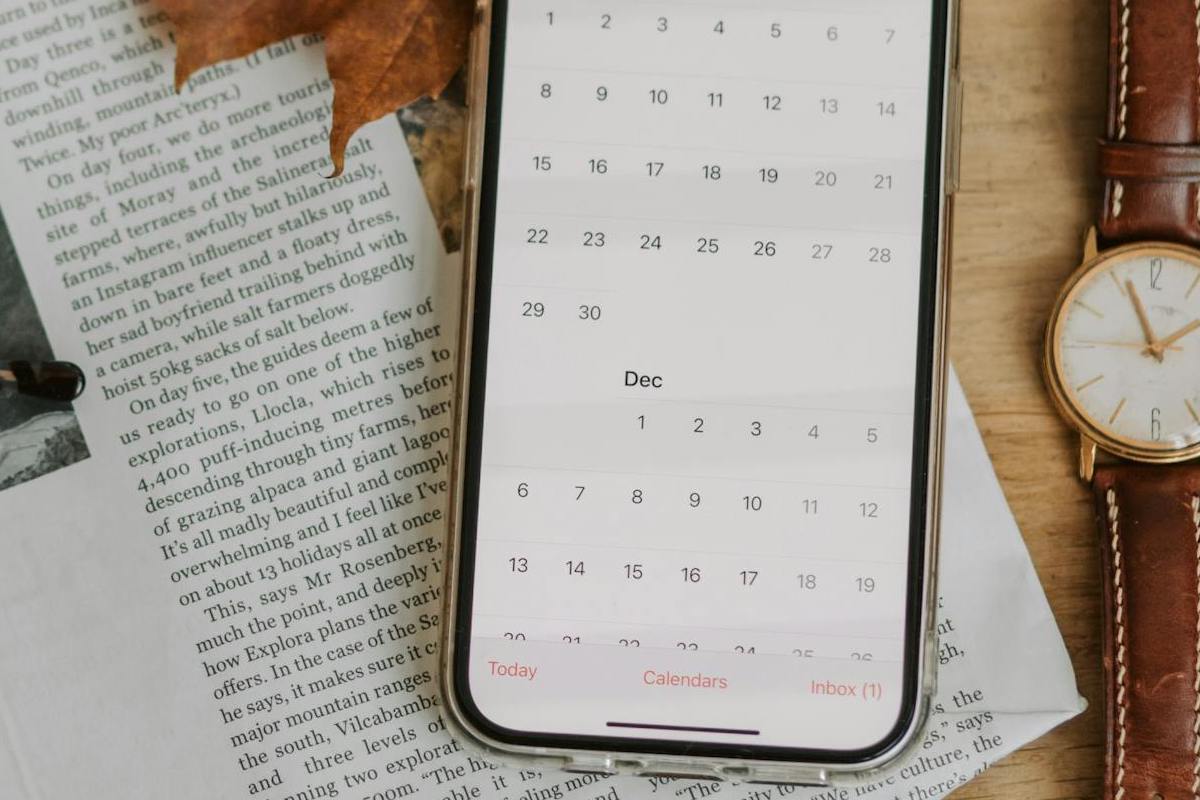

Time is a valuable commodity. It’s something that can’t be bought or returned. You can’t redo how you spend your time or go back and ask for more time. How you decide to spend your time is completely up to you. And in today’s hectic work, your calendar is your roadmap to how you spend your each day’s precious minutes.
Because of this, you need to have a well-maintained calendar to optimize your day — one that is referred to frequently and updated regularly. Having a calendar without adding all of your time requirements isn’t beneficial. Neither is a calendar that you ignore and bypass in favor of what’s on your agenda for each day. The more you utilize your calendar the more likely you’ll feel primed to take on whatever the day throws your way.
Here are four calendar tips and tricks that will help you own your day.
Set Yourself Up for Success Each Morning
Whether you’re a 9 to 5 employee, a stay at-home parent, or a freelancer, optimizing each day likely looks a bit different. You may have a set time for when you need to be at the office or child drop off may happen at the same time each day. But other than that, your schedule for each day may differ in many ways. Work meetings, family obligations, and deadlines can all shift how you are able to optimize your day and how your schedule might look.
As you’re getting ready to take on the day, take time to review what you have on your calendar to better optimize your day. This ensures you have everything you need before you head out the door and are dressed appropriately for whatever may be on your schedule. If you have any overlaps in your schedule, you can address them early rather than later. Additionally, you can reprioritize what needs to be done based on what happened yesterday. A team meeting for a big project can be pushed back if you and your team don’t have all the information you need to get started.
If you’re so rushed in the a.m. that you keep forgetting to glance at your digital calendar, try these tips. First, set a reminder on your smartphone at the same time each day to review what’s on your calendar. Or, second, if you own a smart home device you can have it read your schedule for you! Those who use Google Calendar and have a Google Home, for instance, can turn on the ‘Routines’ feature. With this feature, your Google Home will recite what is on your calendar at the same time each morning. This Personal Routine can be set in the My Activity setting of Google Home.
Block Time for All Your Needs
How many times have you been double booked, sacrificing your personal appointment for a team meeting? It can be frustrating, particularly if you were betting on having that time to take a step away from your computer. While there’s no surefire way to guarantee that this won’t happen again, blocking off time is a good habit to adapt. With time blocking, you’re setting aside chunks of time to get what you need done. This can be a personal appointment, such as a workout class, or simply time to do some deep work.
Having a jammed calendar with back-to-back meetings doesn’t allow you to focus on the tasks on your to-do list. You likely end the day feeling drained, exhausted and having more items to take care of than when you began the day. At the beginning of each week, take a look at what you need to get done and when in the upcoming week you want to focus on these items. Block off time in your schedule so others won’t think that you are free to meet.
For personal needs, manage expectations with your teammates and colleagues. If you need to log off early one day, make sure you make note of this in your calendar. Honor these time blocks to demonstrate to others that you value your personal time. Skipping lunch, for example, because you have too much going on isn’t healthy for you or your team. Setting aside 20 to 30 minutes to eat can be the time you need to feel energized and ready to tackle the rest of the day.
Color Code to Keep Track of Your Life
Having multiple calendars can help separate your work life from your personal life, but it can also create more confusion. Scheduling your kid’s dentist appointment may mean flipping back and forth between several digital calendars to avoid double booking yourself. And the more calendars you have, the more you may feel like you’re project managing your life rather than living it!
To avoid this situation, create one master calendar that syncs to any of your other digital calendars. If you and your partner share a calendar, make sure it updates with that just as it updates with your work calendar. You can turn on privacy settings so your colleagues don’t see that you have a date night on Tuesday, but rather that you’re busy starting at 5 p.m. On this master calendar, use color coding so you can take a glance and know what you have going on.
Assign a color to each task or time block that makes sense for you. For instance, opt for red for urgent deadlines, blue for team brainstorms, and green for personal training. Most digital calendars allow you to assign a color to each event. The calendar automatically copies this color to any duplicate or repeating event, eliminating the need for you to edit it each time.
Optimize Your Day by Having Your Calendar Do The Work For You
You need to schedule a team meeting but it looks like everyone has a conflicting schedule. You start a Slack message, waiting for people to confirm if they can or cannot make a certain time. Once you schedule the meeting, you get a few responses back from people saying they’re double booked. This back-and-forth isn’t only time consuming but can be annoying too.
Fortunately, you can eliminate this unnecessary exchange by utilizing a simple tool called ‘Find a Time’ in Google Calendar or Calendar. Google Calendar users can input the meeting information and required attendees and select the ‘Find a Time’ tab to see available slots. You can then schedule the meeting as normal seeing the ‘Suggested Time.’
Those using Calendar.com will also schedule a meeting as normal. But before selecting a time, you’ll see when each attendee is truly available on the calendar screen. A grayed out slot means the attendee is unavailable and the slot is unclickable. Since it’s a unified calendar, it checks all of the individual’s selected calendars, not just their work calendar.
Takeaways
Nobody likes the feeling that they’re missing something or realizing the moment that they forgot to attend a meeting or appointment. While we all might have a bit of forgetfulness at some point or another, having an up-to-date calendar can be valuable in optimizing your day.
Designing your calendar to fit your unique work and personal needs enables you to feel in control of your life. And there’s a better chance that you’ll actually use your calendar once you see how it can work for you.
Featured Image Credit: Photo by Vlada Karpovich; Pexels; Thank you.











John Rampton
John’s goal in life is to make people’s lives much more productive. Upping productivity allows us to spend more time doing the things we enjoy most. John was recently recognized by Entrepreneur Magazine as being one of the top marketers in the World. John is co-founder and CEO of Calendar.